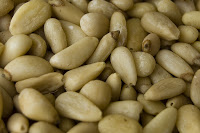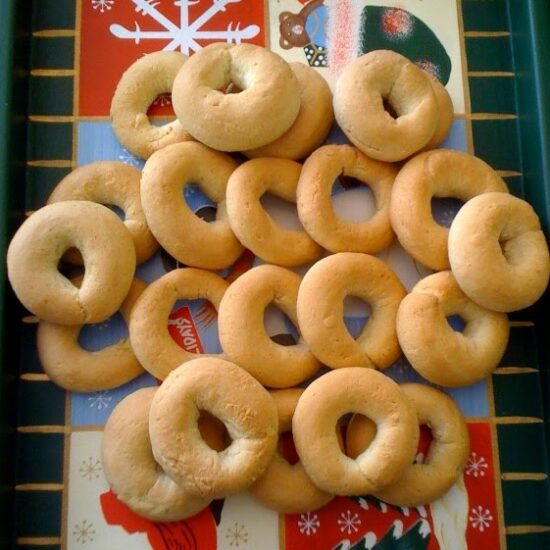 Pignoli, pignolia, piñon, Indian nut.
Pignoli, pignolia, piñon, Indian nut.
Whatever you call them, pine nuts are delicious!
Pine nuts are seeds from cones of certain pine trees. They’re hand-harvested, which explains their high cost. But they’re worth it!
Two Main Varieties:
The Mediterranean pine nut which comes from the stone pine, has a delicate flavor and is the more expensive of the two. The Chinese pine nut has a stronger flavor that tends to overpower some foods.
Pine nuts have a creamy color, slightly crunchy texture, and taste buttery. They’re a good source of oleic acid, a monounsaturated fat, which is a good thing. This helps lower cholesterol by removing triglycerides (a contributor to heart disease) from the body. Pine nuts are loaded with antioxidants, vitamins A,D, E, K , thiamin (a B-vitamin), and lutein – for healthy eyes.
It’s best to store pine nuts in the refrigerator (up to 3 months), or freezer (up to 9 months), as the high fat content can cause the nuts to turn rancid rather quickly.
Pine nuts are widely used in Middle Eastern, Mediterranean, Asian, and Italian cuisine.
We’re big fans of pine nuts at The Armenian Kitchen. We use them in appetizers (muhamarra, midia dolma), entrees (kufteh), and desserts (farina halva).
The following recipe was one of my favorites made by “Chief”, the Greek chef at the Van Hotel.
Farina Halva
Yield: Approx. 8 servings
1/2 cup sugar
1 cup water
1 cup milk
1/4 cup (1/2 stick) unsalted butter
1 cup farina or Cream of Wheat – NOT the quick cooking variety
½ cup pine nuts
Cinnamon to taste
1. In a saucepan, combine sugar, water and milk. Bring to a boil. Stir to be sure sugar is dissolved. Remove from heat and allow to cool.
2. In a large saucepan, melt butter. Stir in farina and pine nuts. Reduce heat and stir until they are lightly browned, about 15 minutes.
3. Slowly pour the milk mixture into the farina mixture, stirring vigorously to prevent lumping.
4. When mixture is well blended, reduce heat and cook, covered, for 15 minutes, or until liquid is absorbed.
5. Remove saucepan from heat. Lift lid, and place a towel across the pan. Replace lid; allow a “rest” time of 20-30 minutes.
6. After removing towel and lid, fluff the halva with a fork. The texture should be light and crumbly.
Serve warm with a sprinkle of cinnamon.
(Visited 410 times, 1 visits today)



Imrik Halvah – a mouth watering Feneseh dessert